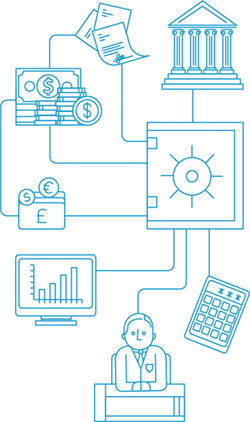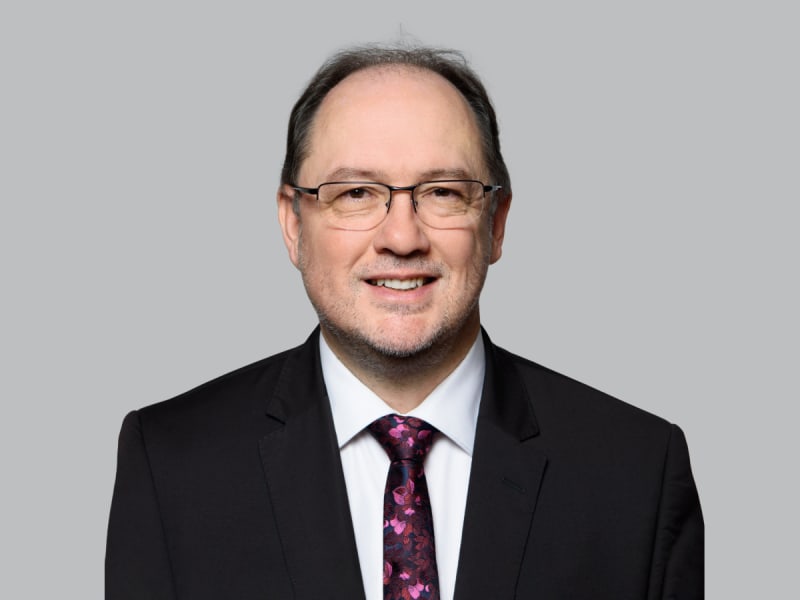In the current environment of high inflation and increasing interest rates, there is no better time to review your costs.
Firstly, we want to be clear that this article provides general advice only and RSM Australia Pty Ltd is not licensed to provide financial advice. You should always seek financial advice from a licensed financial adviser.
For medical practitioners who have a home, business, or investment loan, interest is a substantial and increasing cost.
Interest rates may not peak until 2024, so it is critical to plan now and look for ways to minimise and manage your interest costs going forward. In the process, it’s worth looking at your income tax, too, as it can also be a substantial cost.
There are many options to consider when reviewing your finances, particularly managing loans, debt, interest, and taxes.
We also examine superannuation, touching on how you can benefit and things you should consider in relation to superannuation contributions.
Some initial questions to ask yourself are:
- Is your current tax structure still appropriate?
- How can any loans you have be structured more effectively?
- Should you have a service entity? If you already have one, are you calculating the service fees in accordance with ATO guidelines?
- Should you have a family trust or is an investment company a good idea?
- How should your spouse be remunerated and by how much?
- How much superannuation should you be contributing for you and your spouse?
- How and when should you be purchasing medical equipment and/or motor vehicles?
INTEREST RATES
It is vital you understand what your after-tax interest cost is. This can be expressed as a percentage. If your loan is non-deductible the after-tax cost is the same as the interest rate. An average non-deductible home loan is currently costing you around 6.0 % interest (thanks to the recent RBA hikes). If your loan is tax deductible, the cost is reduced by your marginal tax rate.
For example, if you are on the top marginal rate the interest cost is reduced by 47%. Assuming a slightly higher interest rate for an investment loan of 6.5 %, the fact the loan is tax deductible means it is only costing you 3.445 % after tax.
That is a huge saving that you could be missing out on if you have neglected to structure your affairs in the best possible way.
Here are some strategies to save interest and maximise the tax deductibility of any loans you have. These strategies may save you thousands in interest, tax, or both, so don’t put it off any longer.
- Contact your bank and ask them for a better interest rate. Your bank may offer you a much better deal than you are currently on. It doesn’t hurt to ask.
- Refinance with another Financial Institution. Aim to obtain quotes from at least two other Institutions. Consider using a reputable broker. You may be able to save a lot of interest by simply switching Banks. Many banks will offer a honeymoon rate of up to 0.5% less than the standard rate for the first 12 months. This can be a substantial saving. Also, obtain fixed rate quotes as well as it may be worth locking in rather than being subject to variable rates continuing to increase... If we have a recession, fixed rates could come down a lot and be more attractive.
- As mentioned above, it is highly beneficial if your interest is tax deductible. If you borrowed to buy your home interest will not be tax deductible. But what if there was a way to pay down your non-deductible home loan quickly by obtaining a new loan facility to pay business expenses that is tax deductible?
- Did you know that interest paid on borrowing to pay tax is tax deductible? It sounds counterintuitive to borrow to pay tax, but if combined with a clever overall strategy can make sense. You may be able to use a substantial portion of your business cash flow to pay down your non-deductible home loan and obtain a new loan to pay for your business and tax costs. By structuring your loans this way, the new loan is tax deductible, and your non-deductible loan can be paid down very quickly. In fact, depending on your circumstances for example you may be able to pay off a $1M non-deductible home loan over a few short years. This could be saving you around $20,000 in tax yearly. However, you will need to remember that the business cash flow belongs to the business. Depending on your structure, you will need to ensure that the way you take any money out of your business does not trigger other tax problems, such as loans to directors, shareholders and associates dealt with under what is known as Division 7A. Take the opportunity to review your loan structures and obtain the right advice from your accountant.
- Should you have a loan offset account or a redraw facility and do you know the difference from a tax perspective? In addition, if you have an offset account, are you using and benefiting
 from it? Many may not know but often Banks charge a premium interest rate for the privilege of having an offset account linked to your loan. Therefore, if you are not using your offset account, it can be costing you money unnecessarily. Check the details.
from it? Many may not know but often Banks charge a premium interest rate for the privilege of having an offset account linked to your loan. Therefore, if you are not using your offset account, it can be costing you money unnecessarily. Check the details.
MANAGING YOUR TAX BILL INCLUDING SUPERANNUATION CONTRIBUTIONS
Here are some summary points to consider in managing the tax on your income. Naturally, each practice and practitioner will have its or their own circumstances to consider.
- Should you have a service entity and if so, should it be a company or trust? You should also be aware the ATO. is cracking down on the way trust distributions are treated so a company may be an easier, cleaner option. Companies running such a service business will only pay tax at a rate of 25% instead of 47%, provided the earnings remain in the company. Careful tax planning and structuring are required so as not to trigger Division 7A loan issues.
- Have you considered making use of the tax incentive of being able to immediately write off the full cost of any medical equipment prior to 30 June 2023? This could cut the actual after-tax cost by nearly half this financial year. This can also include motor vehicles up to the $59,000 cost limit for yourself and/or your spouse. Please remember motor vehicles are subject to strict substantiation requirements so again make sure you obtain advice. Equipment acquired after 30 June 2023 still attracts a tax saving, albeit over a longer period, generally 4 to 5 years.
- Have you considered the very generous tax incentive for unused superannuation contribution caps? If you and your spouse have super balances of less than $500,000 each and you have not made any concessional super contributions for the past four years you may be entitled to obtain a tax deduction for superannuation contributions of up to $130,000 each in the 2023 financial year. This could save you and your spouse up to $78,000 in tax. In any of those years, if you have contributed less than the maximum allowable, you can make a catch-up contribution for the balance in one go.
- If you have already made contributions for yourself, but not your spouse did you know, from a tax perspective, it is often more tax effective to superannuate your spouse first? This is due to generally your spouse having a lower taxable income and not being subject to the higher income 15% super surcharge. Consider making up for any lost opportunities here by seeking appropriate advice. As superannuation cannot generally be accessed until you retire, care needs to be taken to ensure you obtain both accounting and financial advice.
Each of these areas requires due consideration of your overall structure and tax position. Each practitioner will no doubt have factors unique to them. It is important that you receive specific advice on your circumstances and put in place a strategy that is appropriate to you.
For further information
Please reach out to a financial adviser at your local RSM office. An introduction to an adviser at RSM Financial Services Australia Pty Ltd can be made if requested.





